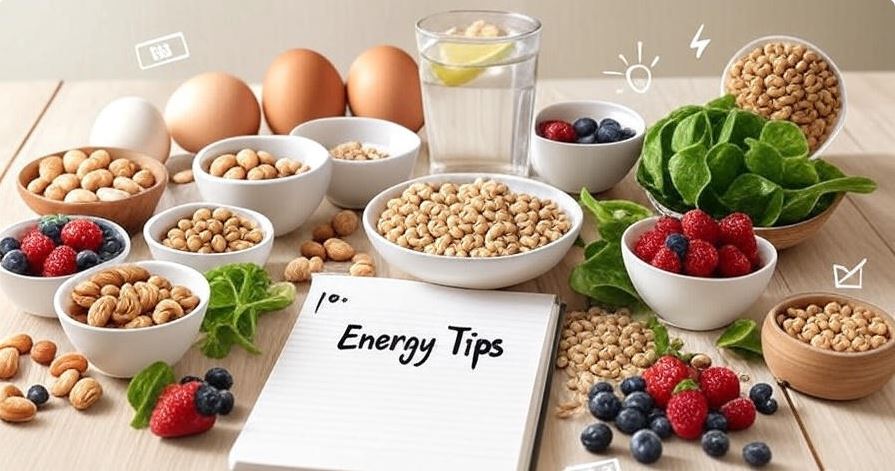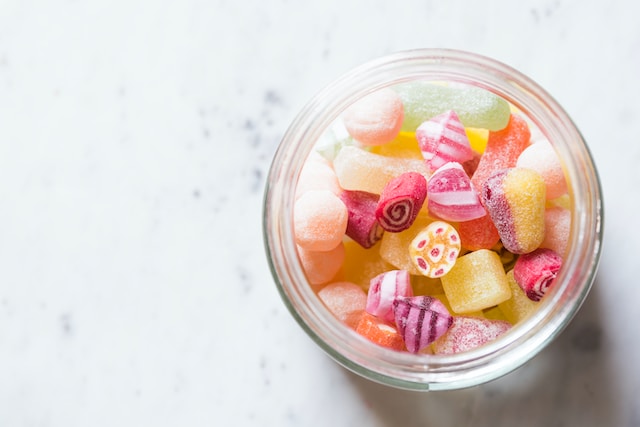Reducing sugar intake has become a top priority for many people seeking better health, weight control, or improved energy levels. But there’s a common concern: “If I cut sugar, will I feel tired or low on energy?” The good news is, you can absolutely reduce sugar without losing energy—if you do it strategically. In this comprehensive guide, we’ll walk you through science-backed, practical methods to reduce sugar from your diet while maintaining steady, reliable energy throughout the day.
Why Sugar Reduction Matters
Excessive sugar consumption has been linked to a host of health problems, including:
- Type 2 diabetes
- Heart disease
- Obesity
- Inflammation
- Fatty liver disease
Beyond long-term health risks, high sugar intake also affects daily energy levels. Refined sugars cause rapid blood sugar spikes, followed by crashes that leave you tired, hungry, and irritable.
By cutting back on sugar intelligently, you can prevent these energy dips and promote more consistent physical and mental performance throughout the day.
Understanding Sugar and Energy: The Blood Sugar Connection
What Happens When You Eat Sugar?
When you consume sugar, particularly in the form of added sugars or refined carbohydrates, it rapidly enters your bloodstream, raising blood glucose levels. In response, your body releases insulin to bring those levels down. The quicker the spike, the more intense the crash that follows.
This “rollercoaster” of blood sugar levels can lead to fatigue, mood swings, and sugar cravings, which further perpetuate the cycle.
The Key to Stable Energy: Glycemic Balance
To avoid this, the goal is to maintain a steady blood sugar curve—avoiding sharp peaks and valleys. This can be achieved by reducing added sugars and emphasizing foods that digest more slowly, releasing glucose gradually.
How to Reduce Sugar Without Losing Energy: Step-by-Step Strategy
The core of this guide revolves around the question: How to Reduce Sugar Without Losing Energy? Let’s explore detailed, research-backed strategies that work.
Step 1: Identify and Eliminate Added Sugars
Start by reviewing ingredient labels and nutrition facts. Added sugars appear under many names, including:
- Sucrose
- High fructose corn syrup
- Glucose
- Maltose
- Cane sugar
- Honey (still counted as added sugar)
Action Tip: Use a grocery list app to flag products with more than 5g of added sugar per serving.
You don’t need to eliminate all sugar overnight. Begin by choosing unsweetened versions of foods you already eat—like yogurt, cereal, or almond milk. Then, gradually expand.
Step 2: Replace Sugary Drinks
Beverages are a hidden sugar trap. A single can of soda contains around 35-40g of sugar. Even “healthy” options like bottled iced tea and flavored waters often contain significant amounts.
Better Choices:
- Unsweetened herbal or green tea
- Sparkling water with lemon or cucumber
- Black coffee or coffee with cinnamon
For a naturally sweet drink, try infusing water with orange slices, mint, or strawberries. You’ll stay hydrated and satisfy your taste buds without sugar.
Step 3: Balance Every Meal With Protein, Fiber, and Fat
When you remove sugar, you need to replace it with something that supports energy. That’s where protein, fiber, and healthy fats come in.
Why This Works:
- Protein slows digestion and promotes satiety.
- Fiber stabilizes blood sugar and improves gut health.
- Fats provide long-lasting fuel and help absorb fat-soluble vitamins.
Meal Example: Instead of a sugary cereal with skim milk, try Greek yogurt (unsweetened) with nuts, berries, and chia seeds.
For lunch, swap out white bread sandwiches with whole grain wraps filled with lean protein, avocado, and crunchy vegetables.
Step 4: Embrace Natural Sweetness
Rather than going cold turkey, retrain your palate by opting for naturally sweet, whole foods:
- Fresh fruits (berries, apples, oranges)
- Roasted vegetables (carrots, sweet potatoes)
- Spices like cinnamon, nutmeg, and vanilla
Baking at home? Use mashed bananas, dates, or unsweetened applesauce in place of sugar.
Step 5: Reduce Sugar Gradually
A sudden drop in sugar intake can trigger withdrawal-like symptoms: irritability, headaches, and fatigue. Taper off slowly to allow your body to adjust.
Example Plan:
- Week 1: Cut sugary beverages in half
- Week 2: Swap one dessert for fruit
- Week 3: Reduce processed snacks
- Week 4: Try savory breakfast options
By week 5, your taste buds will begin to adjust, and you’ll notice the natural sweetness in foods you once thought were bland.
Step 6: Watch Out for Hidden Sugars
Added sugars often hide in products you wouldn’t expect:
- Salad dressings
- Ketchup and sauces
- Yogurt
- Granola bars
- Breads
Read labels carefully. A good rule of thumb: choose items with fewer than 5g of added sugar per serving.
Another trick? Cook from scratch when possible. Homemade versions of sauces and snacks give you complete control over ingredients.
Step 7: Optimize Your Snack Game
Avoid energy crashes by having balanced, low-sugar snacks on hand.
Smart Snack Ideas:
- Handful of almonds and a boiled egg
- Hummus with raw veggies
- Apple slices with peanut butter (no added sugar)
- Cottage cheese with cinnamon
- Rice cakes with avocado and sea salt
- Chia pudding made with unsweetened almond milk and berries
Snacking smart ensures you’re never too hungry, which is often when sugar cravings strike hardest.
Step 8: Meal Sequencing for Energy Control
What you eat first in a meal impacts your blood sugar response. Studies show starting with vegetables or protein before carbohydrates helps blunt glucose spikes.
Strategy:
- Begin meals with a salad or protein source
- Follow with complex carbs if desired (quinoa, brown rice)
You’ll feel full longer and maintain energy more evenly between meals.
Step 9: Stay Hydrated
Fatigue is often a result of dehydration. Water also helps regulate appetite and digestion.
Tip: Aim for 8-10 cups of water daily, more if you’re physically active.
Try drinking a glass of water before meals. It aids digestion and may reduce overeating.
Step 10: Get Quality Sleep
Lack of sleep increases cravings for high-sugar foods and decreases your body’s insulin sensitivity.
Sleep Hygiene Tips:
- Keep a consistent sleep schedule
- Avoid screens 1 hour before bed
- Create a dark, cool, quiet sleeping environment
- Cut caffeine after 2 PM
Sleep acts as a natural appetite regulator. Prioritize it as much as your diet.
Foods That Help Maintain Energy Without Sugar
When reducing sugar, the key is to add nutrient-dense, energy-sustaining foods:
Best Energy-Supporting Foods:
- Whole grains: oats, quinoa, brown rice
- Legumes: lentils, black beans, chickpeas
- Fruits: berries, apples, oranges, bananas (in moderation)
- Vegetables: broccoli, spinach, bell peppers
- Healthy fats: avocado, nuts, seeds, olive oil
- Lean proteins: eggs, tofu, chicken, fish, Greek yogurt
These foods release energy slowly, helping avoid the highs and lows associated with refined sugar.
Energy-Boosting Meal Plan Sample
Breakfast:
- Scrambled eggs with spinach and mushrooms
- Whole grain toast with almond butter
Snack:
- Handful of walnuts and half a pear
Lunch:
- Grilled chicken salad with mixed greens, chickpeas, olive oil dressing
Snack:
- Greek yogurt (unsweetened) with cinnamon and flaxseeds
Dinner:
- Baked salmon, roasted sweet potatoes, steamed broccoli
Evening:
- Herbal tea and a small piece of dark chocolate (70%+ cocoa)
This plan offers plenty of flavor and satisfaction without relying on added sugars.
Managing Sugar Cravings Without Losing Control
Sugar cravings are common when making dietary changes. Here are practical ways to manage them:
- Distraction: Go for a walk or do a short physical task
- Hydration: Drink a glass of water before eating
- Mindfulness: Recognize emotional vs. physical hunger
- Sleep: Aim for 7-9 hours to reduce cravings
- Support: Share goals with a friend or track progress in a journal
Keep healthy alternatives within arm’s reach. If you need something sweet, opt for fruit or dark chocolate in moderation.
Frequently Asked Questions (FAQs)
Can I cut out sugar completely?
Yes, but it’s important to distinguish between added sugars and natural sugars in whole foods. You don’t need to eliminate fruit or dairy, but you should reduce or avoid added sugars in processed foods.
Will reducing sugar make me feel tired?
Initially, yes—especially if you quit abruptly. But once your body adapts, most people report more stable, consistent energy and fewer crashes.
What is the best sugar substitute for energy?
Natural substitutes like fruit, cinnamon, or stevia (in moderation) can satisfy sweet cravings without disrupting blood sugar levels.
How long does it take to adjust to a low-sugar diet?
Most people feel better within 1-2 weeks. Cravings diminish, energy stabilizes, and taste buds adapt to enjoy less sweetness.
How do I eat out without overdoing sugar?
- Choose grilled over fried
- Ask for dressing on the side
- Skip dessert or share a small portion
- Drink water or unsweetened tea
- Check restaurant menus online for nutritional info
How does exercise help with sugar reduction?
Exercise improves insulin sensitivity and increases glucose uptake by muscles, reducing blood sugar spikes. It also boosts endorphins, which helps reduce emotional eating.
Aim for at least 30 minutes of moderate activity most days of the week.
Conclusion
Learning how to reduce sugar without losing energy isn’t just about cutting back—it’s about replacing the quick highs of sugar with the steady fuel of real, nutrient-dense foods. With the right strategies in place—including gradual sugar reduction, balanced meals, strategic snacks, and hydration—you can experience increased energy, mental clarity, and overall better health.
The benefits go beyond energy. You’ll support long-term heart health, manage your weight more easily, reduce your risk of chronic diseases, and develop a more peaceful relationship with food.
Start small, stay consistent, and focus on how you feel. In just a few weeks, your energy levels, mood, and cravings will all improve. Reducing sugar isn’t about restriction; it’s about reclaiming control over your energy and well-being.












